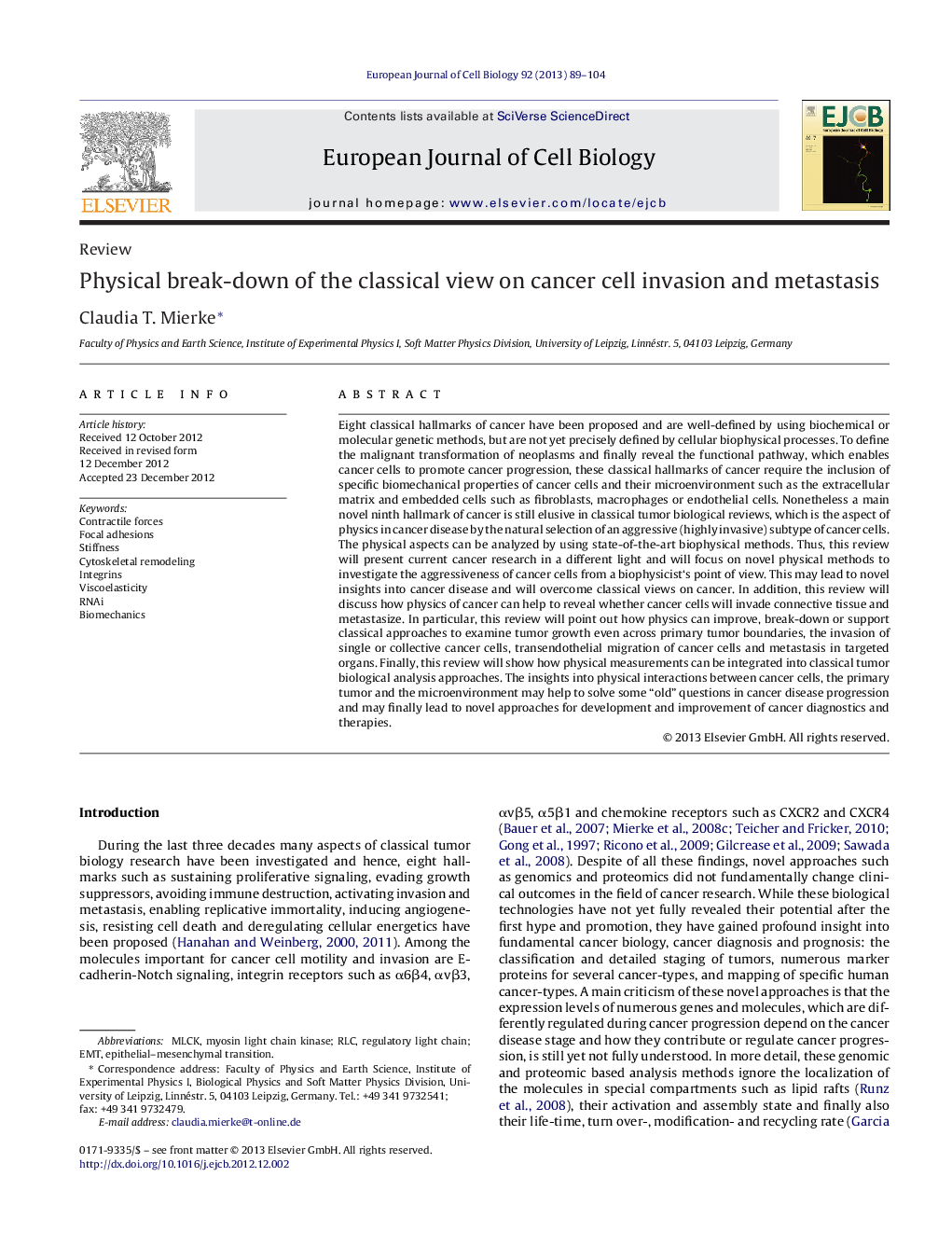| Article ID | Journal | Published Year | Pages | File Type |
|---|---|---|---|---|
| 2178550 | European Journal of Cell Biology | 2013 | 16 Pages |
Eight classical hallmarks of cancer have been proposed and are well-defined by using biochemical or molecular genetic methods, but are not yet precisely defined by cellular biophysical processes. To define the malignant transformation of neoplasms and finally reveal the functional pathway, which enables cancer cells to promote cancer progression, these classical hallmarks of cancer require the inclusion of specific biomechanical properties of cancer cells and their microenvironment such as the extracellular matrix and embedded cells such as fibroblasts, macrophages or endothelial cells. Nonetheless a main novel ninth hallmark of cancer is still elusive in classical tumor biological reviews, which is the aspect of physics in cancer disease by the natural selection of an aggressive (highly invasive) subtype of cancer cells. The physical aspects can be analyzed by using state-of-the-art biophysical methods. Thus, this review will present current cancer research in a different light and will focus on novel physical methods to investigate the aggressiveness of cancer cells from a biophysicist‘s point of view. This may lead to novel insights into cancer disease and will overcome classical views on cancer. In addition, this review will discuss how physics of cancer can help to reveal whether cancer cells will invade connective tissue and metastasize. In particular, this review will point out how physics can improve, break-down or support classical approaches to examine tumor growth even across primary tumor boundaries, the invasion of single or collective cancer cells, transendothelial migration of cancer cells and metastasis in targeted organs. Finally, this review will show how physical measurements can be integrated into classical tumor biological analysis approaches. The insights into physical interactions between cancer cells, the primary tumor and the microenvironment may help to solve some “old” questions in cancer disease progression and may finally lead to novel approaches for development and improvement of cancer diagnostics and therapies.
